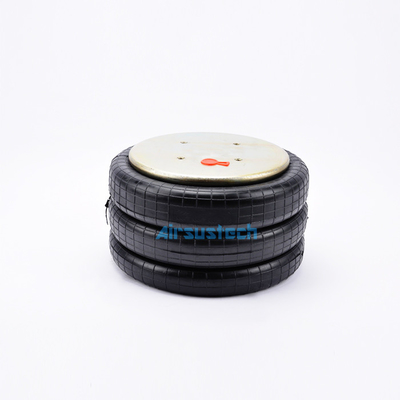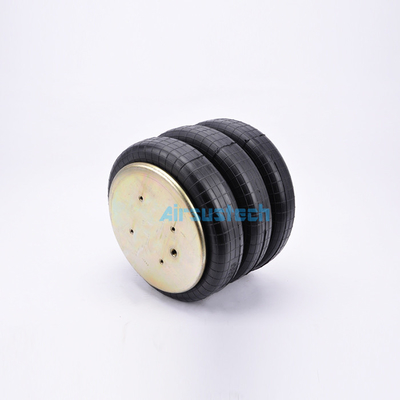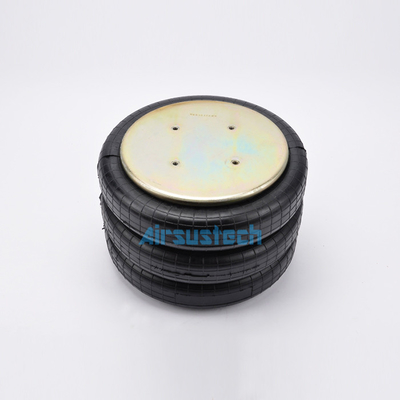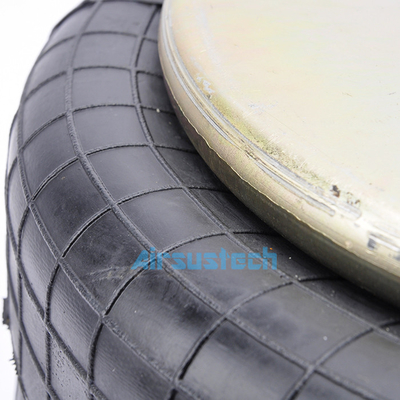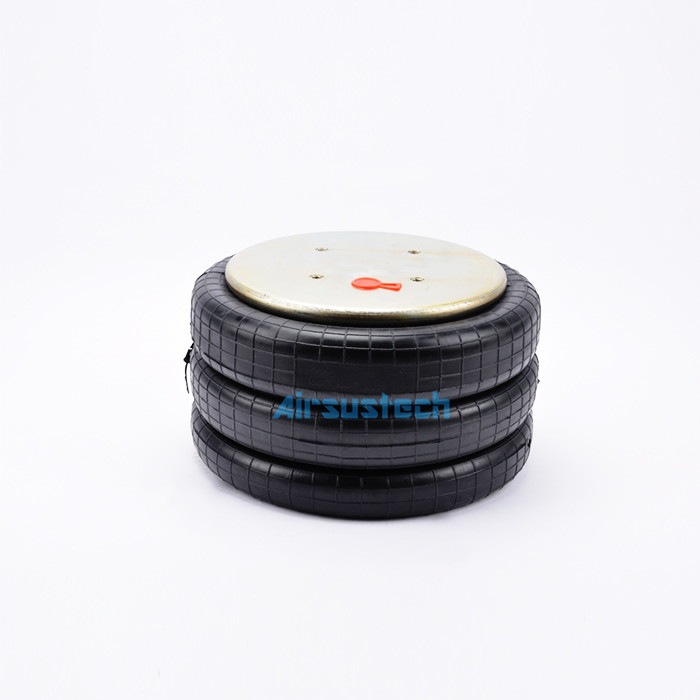3/8 Air Inlet Contitech FT 530 30 Triple Convoluted Rubber Air Spring Shocks
Product Details:
| Place of Origin: | Guangzhou China |
| Brand Name: | AIRSUSTECH |
| Certification: | ISO/TS16949:2009 |
| Model Number: | 3B6383-38 |
Payment & Shipping Terms:
| Minimum Order Quantity: | 3Pieces |
|---|---|
| Packaging Details: | Strong Carton Box or as Customers Requirement |
| Delivery Time: | 5-8 Working Days |
| Payment Terms: | T/T, Western Union, Paypal or Others |
| Supply Ability: | 1000PCS/Week |
|
Detail Information |
|||
| Material: | Rubber And Steel | Certificate: | ISO/TS16949:2009 |
|---|---|---|---|
| Warranty: | 1 Year | Number Of Convolutions: | Three |
| Packing: | Neutral Box Or As Customers' Request | Type: | Air Springs |
| Cross Reference: | Contitech FT 530-30 | Applications: | Industial Or Others |
| Pressure: | 0.2-0.8MPA | Air Hole: | 3/8NPT |
Product Description
3/8 Air Inlet Contitech FT 530 30 Triple Convoluted Rubber Air Spring Shocks
Cross Reference
Contitech FT 530-30
Contitech FT 530 30
Contitech FT530-30
Contitech FT530 30
Specifications and Detailed Technical Parameters: 3B6383-38
Nut/blind nut
Top plate screw (nut) teeth: 4×M10
Bottom cover plate screw (nut) teeth: 4×M10
Air hole/air inlet/air fittings
Air hole/air inlet: 3/8NPT
Rubber Bellows
Top plate diameter (width): 289mm
Diameter (width) of the bottom cover plate: 289mm
Rubber Bellows MAX Diameter: 353mm
The Working Stroke: 381mm
Bumper block/bumper block
With bumper block
Belt loop/Belt loop/Girdle hoop
With belt loop: Two pieces of belt loop/girdle hoop
Min. pressure: 0 bar
Return force to min.height: ≤400N
Overall weight with clamped plates: 5.9kg
Pneumatic application-static characteristic values
Force F[KN]
| Pressure p [bar] | 3 | 4 | 5 | 6 | 7 | 8 | Vol. V [l] | |
| Height H[mm] | 380 | 8.8 | 11.9 | 15.1 | 18.4 | 21.7 | 25.1 | 23.6 |
| 340 | 10.7 | 14.4 | 18.2 | 22.0 | 25.9 | 29.8 | 21.6 | |
| 300 | 12.3 | 16.5 | 20.8 | 25.1 | 29.5 | 33.7 | 19.2 | |
| 260 | 13.7 | 18.2 | 22.9 | 27.6 | 32.3 | 36.9 | 16.6 | |
| 220 | 14.8 | 19.5 | 24.6 | 29.6 | 34.6 | 39.5 | 13.8 | |
| 180 | 15.9 | 21.1 | 26.5 | 31.8 | 37.2 | 42.4 | 10.7 | |
| 140 | 17.0 | 22.4 | 28.1 | 33.6 | 39.1 | 44.7 | 7.5 | |
Other types
| AIRSUSTECH No. | Contitech No. | Stroke |
| 3B7996 | FT 330-29 520 | 117mm-460mm |
| 3B7994 | FT 330-29 546 | 130mm-460mm |
| 3B7995 | FT 330-29 547/64573 | 130mm-460mm |
3B8008 |
FT 330-29 431 | 297mm |
| 3B8010 | FT 330-29 432 | 297mm |
| 3B8027 | FT 330-29 466 | 117mm-460mm |
| 3B8030 | FT 330-29 498 | 130mm-460mm |
| 3B8006 | FT 330-29 430 | 117mm-460mm |
| 3B6386 | FT 530-30 | 381mm |
3B7808 |
FT 530-32 336/FT 530 32 329 | 282mm |
3B53032 |
FT 530-32 -60717 | 282mm |
3B7800 |
FT 530-32 333/FT 530-32 325 |
The related picture of 3B6383-38
![]()
![]()
![]()
Maintenance of rubber air spring
1, choose the right rubber joint medium: such as flexible rubber joint normal application of medium is the temperature of 0-60°C ordinary water, special media such as oil, acid and alkali, high temperature and other corrosive and hard texture, should choose relatively due super resistant material rubber joint, can not blindly string or general.
2, air spring shock absorber installation in the air should pay attention to: high-rise water supply or suspended water supply, the pipeline should be fixed in the hanger, bracket or anchor frame, and can not let the joint bear the weight and axial force of the pipeline itself, otherwise the joint should be equipped with anti-pull device (its bearing force must be greater than the axial force of the pipeline).
3. When installing the rubber joint, the screw of the bolt should be extended to the outside of the joint, and the bolts on the end face of each flange should be tightened evenly and repeatedly according to diagonal compression method to prevent pressure deviation. Screw joints should be tightened with standard spanner with uniform force, do not use force stem force to make the live joint slip wire, slip edge and fracture, and to check regularly, so as not to loose the plate or water seepage.
4. After the rubber joint is under pressure for the first time (such as installation pressure test, etc.) or before it is used again for a long time, the bolt should be re-pressurized and tightened before it is put into operation.
.




